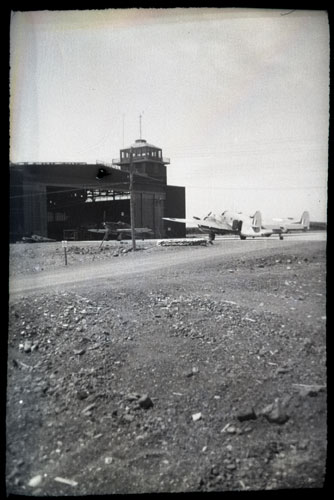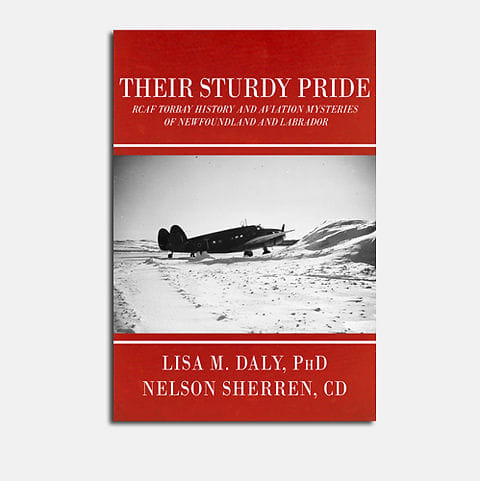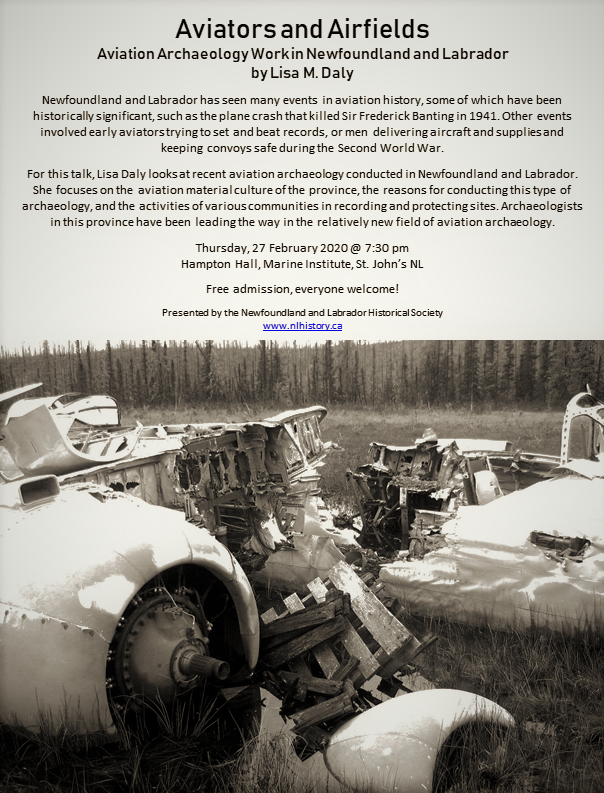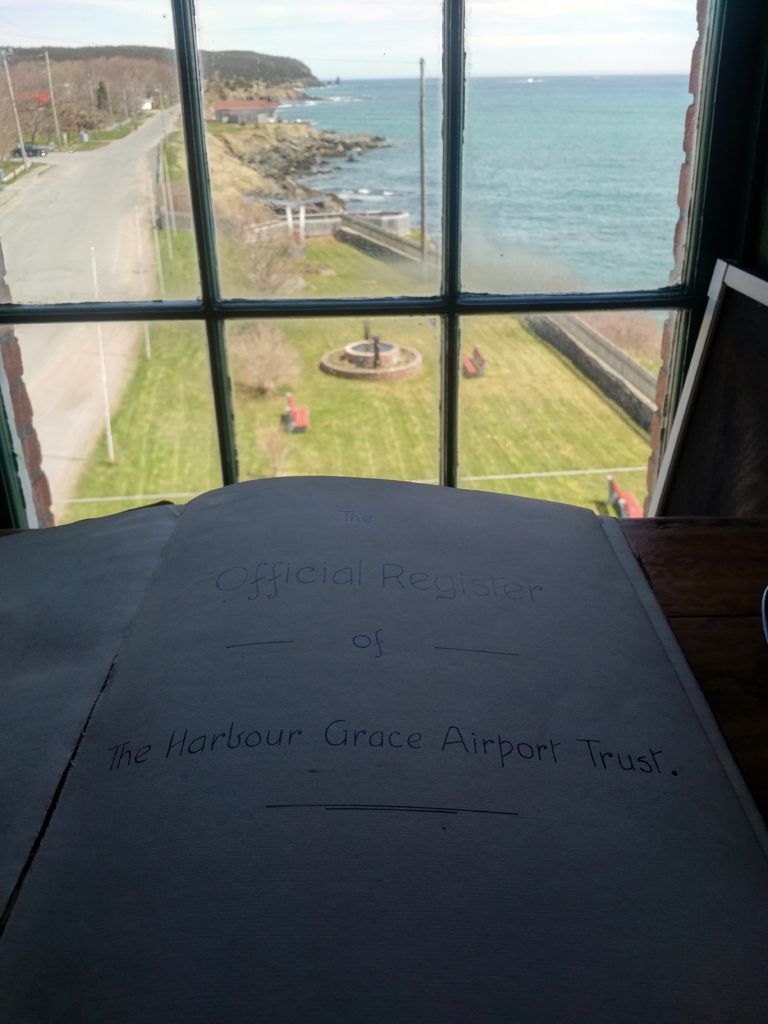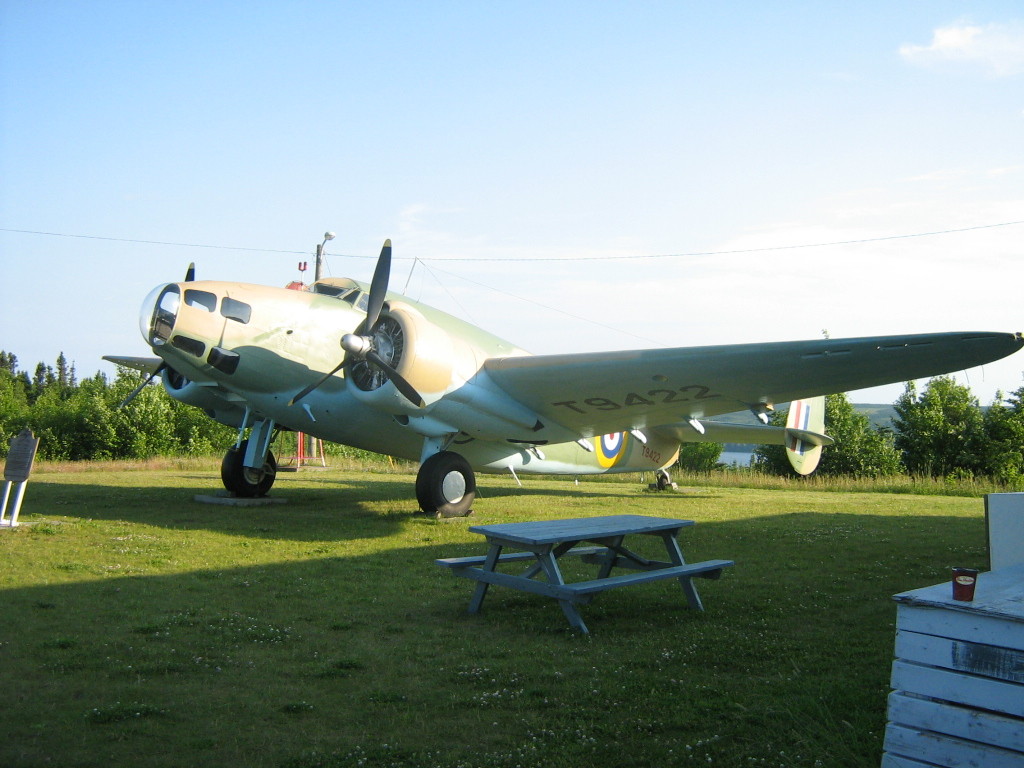After years of hard work by both myself and Nelson J. Sherren, our book, Their Sturdy Pride: RCAF History and Aviation Mysteries of Newfoundland and Labrador is finally available. For now, just the paperback is available, but an ebook will be available soon. Find it through Engen Books or Amazon. It will soon be available in person at locations across Newfoundland, and hopefully Labrador and further afield.
The book is divided into three sections. The first is Nelson J. Sherren’s history of RCAF Torbay, which is now the St. John’s International Airport. Nelson had worked on this history for years, and around 2016, he shared a copy with me. I did a light edit, but when he pitched it to a publisher, they said it needed more work. He again shared his manuscript with me and said if I could make it something a publisher would accept, then we’d put both of our names on it. But I moved for work soon after that, and the job took up so much of my time that I could only pick at Nelson’s manuscript. And when I moved home, I came home just in time to attend his funeral.
I didn’t want his hard work to be lost, so I continued to work on the book, and now, part 1 is Nelson’s wonderful history of the Royal Canadian Air Force, and later commercial use, of the Torbay Airport. Finally, this section ends with a list of the incidents and accidents that took the lives of those who served at Torbay during the Second World War.
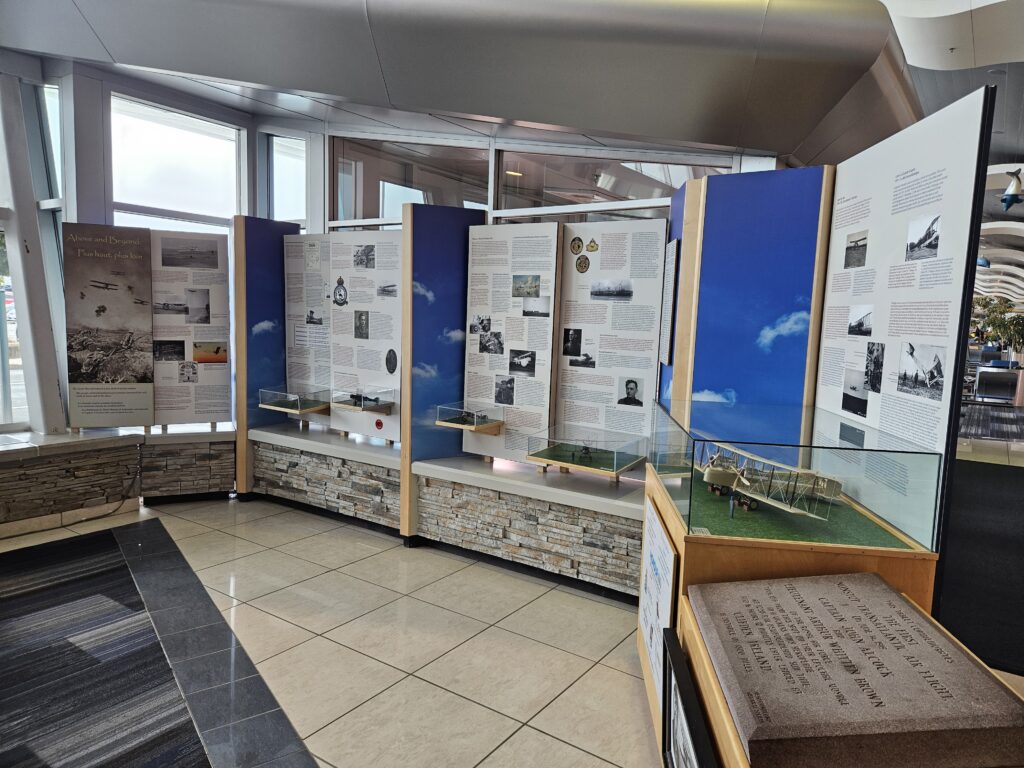
The second part of the book is based on my own archaeology work, featuring two sites that Nelson had a hand in. One is USAAF B-24M 44-42169 that crashed near Gander, NL, on 14 February 1945, that was carrying top secret equipment. The chapter discusses the crash and those who were on the aircraft (see Darrell Hillier’s Stars, stripes, and sacrifice: a wartime familial experience of hope, loss, and grief, and the journey home of an American bomber crew for a detailed history of the crew), the search and recovery of the crash site, and our archaeological work. This aircraft crash site was also one of those featured on Land & Sea, and you can find the episode Fallen War Birds on CBC Gem (requires a CBC account) or on the Gander Airport Historical Society page. This was my first aviation archaeology site, and the excavation was run by Dr. Michael Deal. I had just come back from finishing my MSc in Forensic and Biological Anthropology at Bournemouth University and had applied for a few different summer archaeology positions. Working on this site changed is what created my passion for aviation archaeology and history, and Nelson Sherren supported and encouraged my work every step of the way. I met him because of this site, and happy that we became friends.
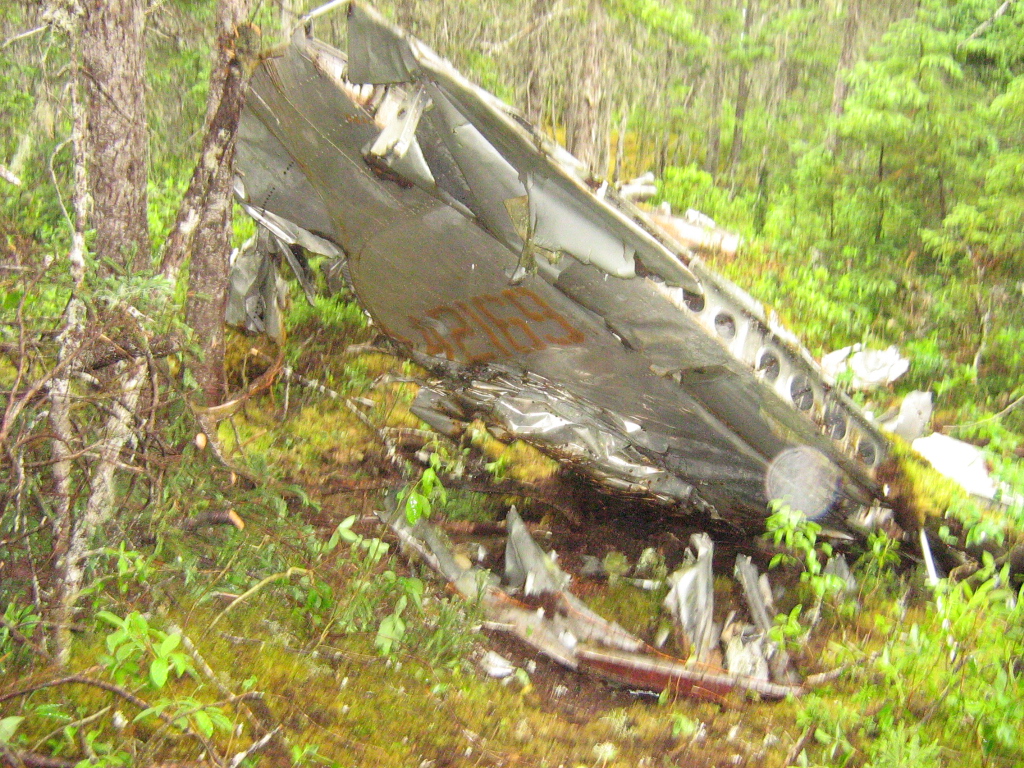
The next chapter examines the crash of the American Overseas Airlines that crashed near Stephenville, NL, on 03 October 1946 (see this post for a brief history and Tales of the Great Outdoors for a bit about how we found the site, plus other stories about hunting, fishing, and trapping [mine is the only searching for an airplane story]). The history of the site is explored, as well as the people who were on the aircraft and the backgrounds of the crew. Like the previous chapter, this one also goes into the archaeological work, and Nelson’s information about later blasting of Crash Hill that attempted to bury the wreckage.
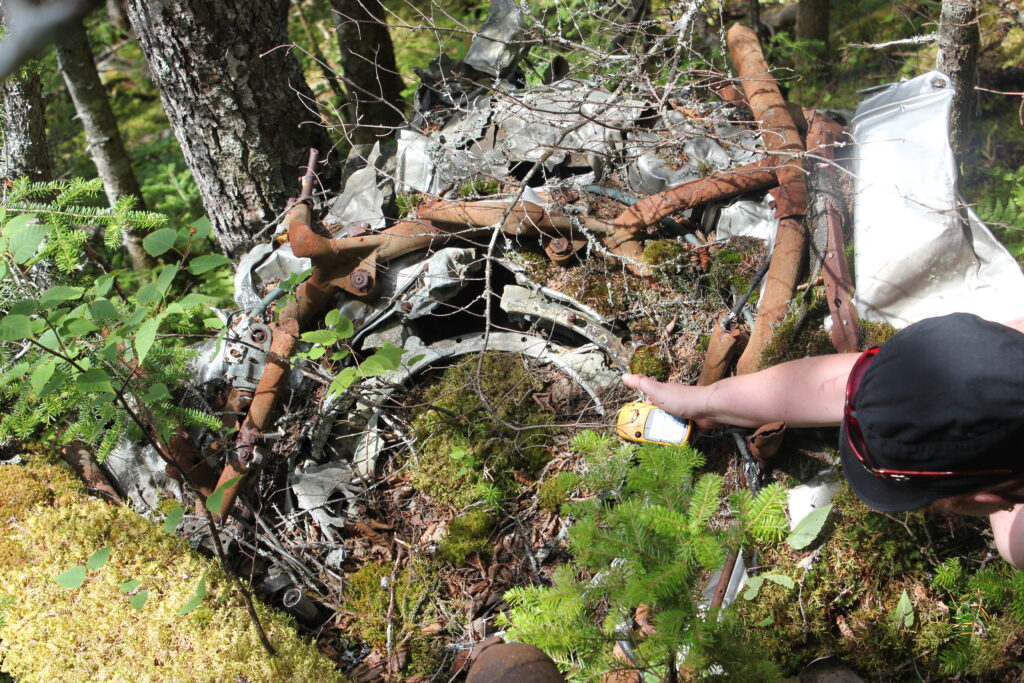
The third section features my more recent work at Gull Pond, on the Cape Shore, and the stories of aircraft wreckage at that pond. Nelson was involved in a search of the area in the 1990s, while another American organization was also searching for the Oiseau Blanc (White Bird). I explore some of that, as well as some of the other avenues of research that Nelson was pursuing, such as a series of articles and documents looking at Norther Quebec as a possible crash site for the Oiseau Blanc, and other theories that Nelson had about what aircraft could have left debris at Gull Pond, like Frances Grayson’s The Dawn, also lost in 1927. I also explore the search conducted by Sidney Cotton for the Oiseau Blanc and some of the searches reported by newspapers for both the Oiseau Blanc and The Dawn. I had the opportunity to visit Gull Pond, and discuss the archaeology that I conducted.
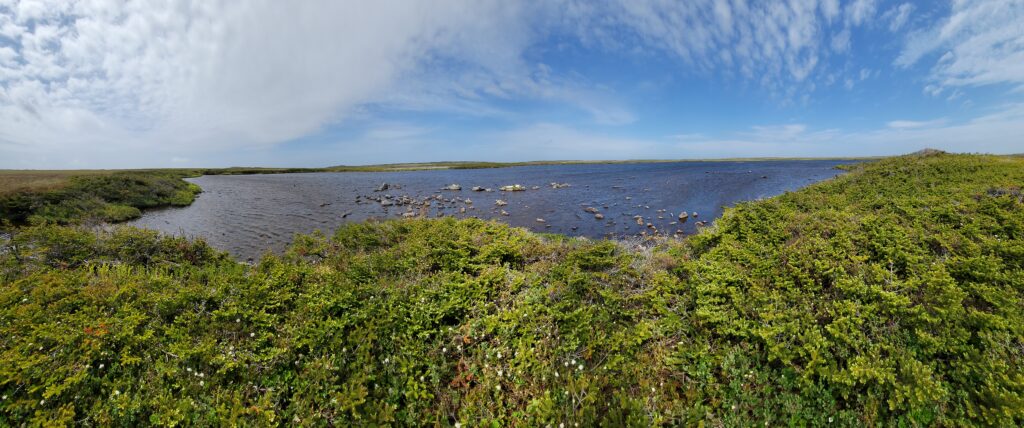
Overall, the book is a tribute to Nelson. It’s his words and research that shaped the work, and without Nelson, I don’t know if I would still be doing this research. He was always there to support my research, and helped so much. Nelson passed in 2019, so his royalties will be going to 515 North Atlantic Royal Canadian Air Cadet Squadron in his memory.
And now that this project is out in the world, stay tuned to here or my social media pages for readings and signings. I’m getting ready to start my next big research project, but hope to find time for a few small research project to share here. In the meantime, you can find Their Sturdy Pride at Engen Books or Amazon.
